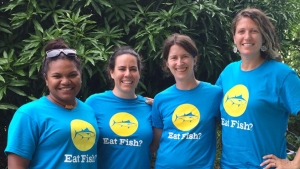
With 340 islands spread over the Pacific, it is no wonder the residents of Palau heavily depend on the ocean for food. When the isolated archipelago closed 80% of its ocean to fishing in order to conserve biodiversity and ensure future food security, the concern quickly became, "What are the unintended consequences on local ecosystems and people and what could it mean for Hawaiʻi and other coastal communities?"
Enter an ongoing, multinational investigation of these potential socio-economic impacts, led by University of Hawaiʻi at Mānoa Associate Professor Kirsten Oleson of the College of Tropical Agriculture Department of Natural Resources and Environmental Management. The study concludes the new mandate will increase both offshore fish prices and tourist consumption of reef fish-which could endanger local reef ecosystems.

However, if tourists are offered a sustainable offshore fish choice, their demand for fish could be kept at current levels, and environmental impacts from increased reef fish consumption could be avoided.
"The Palau National Marine Sanctuary sets an international benchmark for protecting our oceans," said Oleson. "Our findings support the government by turning potential downsides of fishery closures into new opportunities for the local economy."
The lesson learned is applicable to Hawaiʻi, Oleson added, in that policies to protect the ocean, coastline, forests etc. should consider the impact on food systems in order to avoid unintended environmental consequences.
The study, Conservation policies informed by food system feedbacks can avoid unintended consequences, is published in Nature Food.






